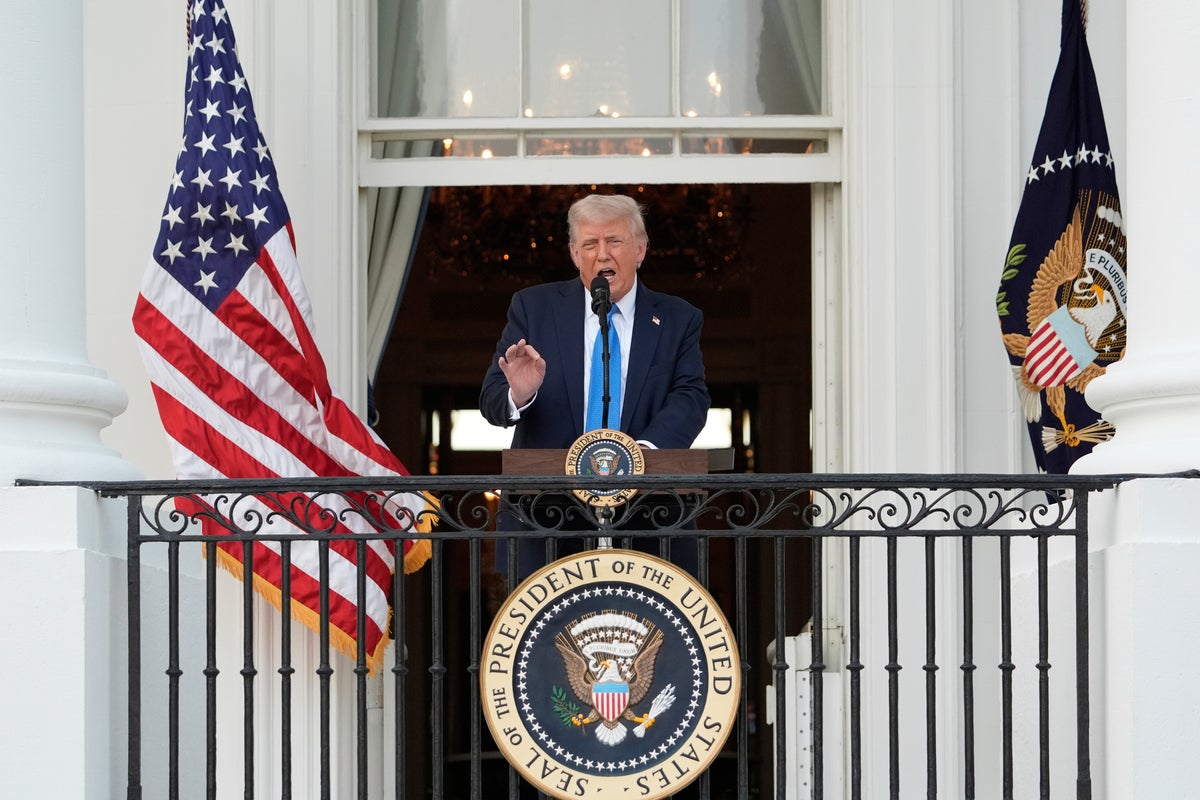U.S. President Donald Trump signed a proclamation on Wednesday banning the citizens of 12 countries from entering the United States.
The directive is part of an immigration crackdown Trump launched this year at the start of his second term, which has also included the deportation to El Salvador of hundreds of Venezuelans suspected of being gang members, as well as efforts to deny enrollments of some foreign students and deport others.
“We will not allow people to enter our country who wish to do us harm,” Trump said in a video posted on X. He said the list could be revised and new countries could be added.
Follow The Independent’s live coverage of Trump’s travel ban here.
The proclamation is effective on June 9, 2025 at 12:01 am EDT (0401 GMT). Visas issued before that date will not be revoked, the order said.
Trump said in a social media address that a recent Molotov cocktail attack on Jewish activists in Colorado, allegedly carried out by an Egyptian man, highlighted the need for such restrictions.
Mohamed Sabry Soliman, the alleged attacker, remained in the U.S. after his travel visa and subsequent work authorization expired, according to the government.
“The recent terror attack in Boulder, Colorado, has underscored the extreme danger posed to our country by the entry of foreign nationals who are not properly vetted, as well as those who come here as temporary visitors and overstay their visas,” Trump said from the Oval Office. “We don’t want them.”
During his first term in office, Trump announced a ban on travelers from seven Muslim-majority nations, a policy that went through several iterations before it was upheld by the Supreme Court in 2018.
Former President Joe Biden, a Democrat who succeeded Trump, repealed that ban on nationals from Iran, Libya, Somalia, Syria and Yemen in 2021, calling it “a stain on our national conscience.”
Trump said the countries subject to the most severe restrictions were determined to harbor a “large-scale presence of terrorists,” fail to cooperate on visa security and have an inability to verify travelers’ identities, inadequate record-keeping of criminal histories and high rates of visa overstays in the United States.
“We cannot have open migration from any country where we cannot safely and reliably vet and screen those who seek to enter the United States,” Trump said.
What countries are included in Trump’s travel ban?
President Donald Trump cited a range of reasons for placing 19 countries under new travel bans or restrictions in the U.S.
They include allegations of lax screening of travelers, “a significant terrorist presence” in its territory, a government that wasn’t cooperative enough in accepting deported citizens or residents who were prone to overstaying their visas in the United States.
Here are the 12 countries placed under the ban, and the seven placed under travel restrictions:
Afghanistan
Trump’s proclamation declares that there is not a reliable central authority for vetting nationals who leave the country, or for issuing passports, therefore raising the risk of national security.
A spokesperson for the Taliban-led Afghan foreign ministry did not immediately respond to a request for comment.
Chad
Equatorial Guinea
Eritrea
Haiti
Iran
Libya
Myanmar
Republic of the Congo
Somalia
Sudan
Yemen
Restricted on US travel
Burundi
Cuba
Laos
Sierra Leone
Togo
Turkmenistan
Venezuela
Somalia immediately pledged to work with the U.S. to address security issues.
“Somalia values its longstanding relationship with the United States and stands ready to engage in dialogue to address the concerns raised,” Dahir Hassan Abdi, the Somali ambassador to the United States, said in a statement.
Venezuelan Interior Minister Diosdado Cabello, a close ally of President Nicolas Maduro, responded on Wednesday evening by describing the U.S. government as fascist and warning Venezuelans of being in the U.S.
“The truth is being in the United States is a big risk for anybody, not just for Venezuelans … They persecute our countrymen, our people for no reason.”
A spokesperson for the Taliban-led Afghan foreign ministry did not immediately respond to a request for comment. Pakistan’s foreign ministry did not immediately reply to a request for comment on how it would handle the thousands of Afghans waiting in Islamabad who had been in the pipeline for U.S. resettlement.
Calls early on Thursday to the spokesperson of Myanmar’s military government were not answered.
The travel ban threatens to upend a 31-year-old Myanmar teacher’s plan to join a U.S. State Department exchange program, which was slated to start in September.
“It is not easy to apply nor get accepted as we needed several recommendation letters,” said the teacher, who currently lives in Thailand and asked not to be named because her visa application is still outstanding.
“In my case, I would get to work at universities that provide digital education,” she said, adding that she had not been updated by the program after Trump’s announcement.
Trump’s presidential campaign focused on a tough border strategy and he previewed his plan in an October 2023 speech, pledging to restrict people from the Gaza Strip, Libya, Somalia, Syria, Yemen and “anywhere else that threatens our security.”
Trump issued an executive order on January 20 requiring intensified security vetting of any foreigners seeking admission to the U.S. to detect national security threats.

